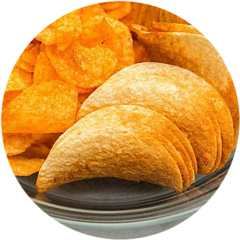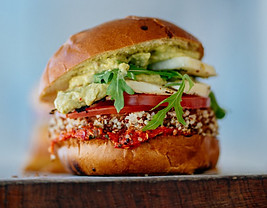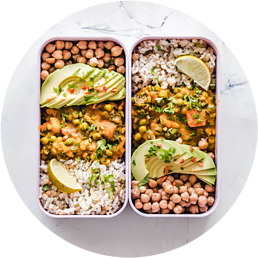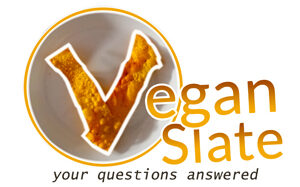 Whether you’re vegan or not, UPFs or Ultra Processed Foods are becoming increasingly recognised across the world … and almost exclusively for the wrong reasons! They have been linked with many health issues and the true extent of the problems being stored up by this type of food is only now becoming apparent. Most of us are blissfully unaware of the UPF in food we consume on a daily basis but there is mounting evidence to suggest a heavy UPF diet increases obesity, gastrointestinal disorders, the risk of cancer, depression, asthma and heart disease,
Whether you’re vegan or not, UPFs or Ultra Processed Foods are becoming increasingly recognised across the world … and almost exclusively for the wrong reasons! They have been linked with many health issues and the true extent of the problems being stored up by this type of food is only now becoming apparent. Most of us are blissfully unaware of the UPF in food we consume on a daily basis but there is mounting evidence to suggest a heavy UPF diet increases obesity, gastrointestinal disorders, the risk of cancer, depression, asthma and heart disease,
But what on earth is it? What is Ultra Processed Food?
An Ultra Processed Foods Definition
The emergence of UPF as a classification of food is a relatively recent occurrence. In reality, humans and our predecessors have been processing food for hundreds of thousands, if not millions of years. Cooking is a process. Grinding grain is a process. Freezing and pasteurising … all processes.
But ultra processed food is a bit different and as a category, generally relates to food products for which it is difficult to identify the fundamental ingredients because they have been altered to such a large extent. These UPFs are profoundly engineered products often created from deconstructed, already highly refined ingredients.

The manufacturers then brew up mixtures of oils, sugar and salt, proteins and flours, combining this with readily available additives like stabilisers, emulsifiers and artificial flavourings to give you the irresistible taste that keeps you coming back for more!
It’s not your fault … UPFs are designed to trigger the addiction centres in your brain!
According to a recent study published in the summer of 2020, ultra processed food now accounts for up to 60% of all energy intake in many high-income countries. Food which is almost entirely devoid of any nutritional value whatsoever!
This means the majority of the food now consumed in (mostly) Western countries does not satisfy our hunger because there are no nutrients in there. So what do we do? We go back for more!
Is it purely a co-incidence that obesity has become so prevalent in Western societies? More concerning is the rest of the world is starting to follow this insane path. China, for example, is rapidly becoming addicted to fast food with their burgeoning middle class. India too … that’s a lot of people!
As promised, here is a relatively concise definition of ultra processed food:
“Pertaining to industrial food preparations, assembled from constituent parts which have been extracted from foods or synthesized from other organic compounds. As a general rule, UPFs are high in salt, sugar and fat, low in protein and fibre and contain no whole food stuffs. Crucial micronutrients and bio-compounds important for human health have been destroyed in the process. They are usually pre-packaged and ready to eat or warm-up.”
Ultra Processed Foods Examples – What’s it Not in?!

You need look no further than the shelves of your preferred supermarket; any one will do!
UPF is in a massive array of products we all consume on a daily basis. From the breakfast toast or cereals in the morning, to the quick grab-a-bag lunch of maybe a sandwich and potato/maize based snack, to the evening meal of pasta with a tomato sauce, finishing up with that ice-cream (vegan of course!) for your pudding.
UPF is almost certainly present in all the examples above!
The convenience and affordability of these ultra processed foods has equated to big profits and bulging pockets for the big food companies and their executives overseeing the pedaling of junk food to the masses.
Here is an ultra processed foods list in order of % of energy intake to give you some examples:
- Mass produced packaged breads
- Packaged ready meals
- Breakfast cereals
- Reconstituted meat products
- Sweets and chocolates
- Biscuits and cakes
- Pastries and buns
- Reconstituted chips (French fries)
- Fizzy drinks, sugar-sweetened fruit drinks and juices
- Milk-based drinks
- Packaged salty snacking foods
- Mass-produced pizza
- Margarine and other spreads (including vegan)
- Sauces, gravies and dressings
- Factory-made desserts

The first four in the list account for nearly 27% of daily calorie intake … that’s huge!
The examples above show just how difficult it is to avoid ultra processed food in our daily routines. It’s a perfect storm. The stuff is everywhere and our bodies become addicted to it …
We crave that big tube of salt and vinegar Pringles and we’ll eat the entire cylinder of pure joy in one sitting, still hungry because there is next to no nutritional value in there!
So we try to achieve that satisfaction we can’t get by consuming more UPF … the result is an epidemic of obesity ravaging the Western world with developing nations bringing up the rear. I believe this is no coincidence.
Ultra Processed Food and Obesity
The evidence is now overwhelming. Numerous studies are linking the obesity epidemic with the consumption of UPF. A quick search on the PLOS website returns hundreds of results.

As our lives seem to become ever more devoid of meaningful time we look for shortcuts and inevitably, mealtimes have suffered. We’ve convinced ourselves we don’t have time to prepare a home-cooked meal like Mum used to make!
We’re always grabbing something on the run, throwing some frozen concoction into the oven for our evening meal. We’ve lost those skills and we’ve lost sight of one of the most important aspects of life … the food we eat!
Food is our medicine, our nourishment. It is the giver of life; it is our insurance policy!
Our bodies are trying to tell us something. It’s time to listen!
Obesity has become one of the most worrying problems facing modern societies. Over the last 45 years, obesity rates have tripled globally. In 2016, according to the WHO, among the worldwide adult population over 39% were recorded as overweight and 13% were classed as obese.
That’s over 650 million people classified as obese in 2016! It’s not that easy to find data which is bang up to date on obesity but the trends certainly haven’t reversed and countries which used to do quite well in the rankings (ie: low obesity rates) are now sucumming to the same fate.
It’s not only adults either. Childhood and adolescent obesity has increased by 1000% in forty years. Yes, that’s a ten-fold increase! What are we feeding our kids? What health problems are we storing up for the future?
Thankfully, vegans are on the right track because a plant-based diet immediately eliminates many of these ultra processed foods from the daily routine. But we still have to be aware of what we pop in the shopping basket … UPF is a marketers dream when it comes to vegan friendly options!
UPF and a Vegan Diet – The Pitfalls

Before veganism became popular and dare I say it, trendy, the food options in the supermarkets were limited, to say the least! Almost nothing pre-packaged on the shelves was suitable for vegans. Milk products were in almost everything. They even used to put fish oil in biscuits!
These days it seems almost every other product on the shelves is vegan friendly. With growing numbers in our ranks the buying power increases and the marketing people have woken up. Why exclude a large percentage of the market (vegans) when it’s easy to make a vegan friendly version? … which, incidentally, many non-vegans report preferring the taste of!
No-one likes a fishy rich tea 🙂
But hold on. It’s not as rosy as it seems. Meat and dairy ‘replacement’ products often contain UPF and they are almost always high in salt and sugar. It’s a similar story for vegan ready-meals.
It would be wholly inadvisable but perfectly possible to follow a vegan diet which contains no fresh fruit or veg. There is so much processed vegan food available now. But if your diet consists mainly of pre-packaged and ‘replacement’ vegan options then you’re not going to be feeling very well a few months in!
This is one of the primary reasons people give up being vegan. They think they can just stick to their old diet but replace the meat and dairy with vegan ‘versions’. The nutrition is not there and they end up unwell, blaming their poor health on veganism!
UPF is Everywhere – Let’s Kick it Out!

I asked ‘is there UPF in food we all eat’ and the depressing answer is yes, it’s everywhere. It’s almost impossible to avoid, whether you are vegan or not. The big food producers have seen a way to maximise the profits they can extract from the market and ultra processed food is where it’s at!
Not to mention the obscene profits flowing through to the big pharma companies who are cashing in on the major health problems which most experts agree are caused by a combination of the food we eat and our sedentary lifestyles.
Again, the approach is to hit them where it hurts. In the wallet! We, as consumers, have the power to change this sorry state of affairs. Just ensure the majority of your shopping basket is fresh fruit and vegetables.
If you can’t cook, learn how to! There’s one or two vegan recipes online 🙂 Wean yourself off those salty snacks, cut out the biscuits and drink more water.
Minimise ultra processed food in your diet … Your body will thank you for it!
I hope you have enjoyed this article and I welcome your feedback. Please leave your comments below and share with your friends. I do my best to respond to everyone. Have a great day!
Thanks,
Rohan.

Also, what would a safe vegan non UPF margarine alternative be? Is coconut oil the best option. Olive oil is a bit limiting as a spread.
Again, all vegan margarines will technically be classified as UPF. Coconut oil works well as a spread but it is high in saturated fat so you may not want to use it all the time. It may be wise to alternate between an olive spread, then an avocado oil based option before cycling back to the coconut oil. It’s very difficult to avoid UPF these days I’m afraid … it’s absolutely everywhere!
As a mother of two children who are dairy intolerant, we were advised to include commercially produced oat milks and cheese/yoghurt substitutes. But with my new “upf” hat, these seem bad choices. Are they? I don’t really understand about dipotassium phosphate, for example. ….but if I avoid these how do I give them enough calcium? I’d be grateful for further resources to help us.
Hi Isha, it’s a great question. Thank you for asking. I’m sure many parents are in the same situation since dairy intolerance is very common.
I wouldn’t say they’re bad choices that you’re making especially as adequate calcium intake is important, particularly in children. But additives like dipotassium phosphate are very common in dairy-free milks. It’s an acidity regulator and emulsifier so it stops the separation in hot drinks which is often seen in cow’s milk alternatives.
I got my researcher’s head on and had a bit of a dive into this chemical. The official advice from the FDA and other food safety groups is that dipotassium phosphate is “generally recognised as safe” which does sound a little ambiguous.
There are some groups who have health concerns over this additive which do seem to be centred around those with pre-existing conditions like kidney disease. The kidneys filter out excess phosphates so it doesn’t accumulate in the body. If the kidneys are not working properly then it can be an issue.
In 2019 the European Food Safety Authority issued new advice on phosphates in food. They were concerned that estimated total intake of these chemicals were exceeding previously established safe levels.
They are now recommending no more than 40mg per 1kg of body weight per day as an acceptable daily intake (ADI) of phosphate. This ADI corresponds to 2.8g for an average adult weighing in at 70kg.
Looking at my ‘Califa Farms’ oat milk, it does indeed contain dipotassium phosphate but there is no data on concentration. I have emailed the company to ask the question. If they come back to me, I will update this comment.
I think for now, the takeaway is don’t overdo it on the dipotassium phosphate. If your kids are having dairy free milks on their morning cereal then go for an organic oat milk (which usually won’t have this additive). The ‘splitting’ is not a concern in a bowl of corn flakes.
Although you may struggle to find an organic oat milk which is fortified with calcium. Naturopath and Herbalist, Lucinda Miller, identified at least 3 (M&S Plant Kitchen Oat, Rude Health Chilled Oat and Alpro Unsweetened Oat). That page has some anecdotal evidence of health problems associated with dipotassium phosphate (to provide some balance!).
Oatmeal is an excellent source of calcium though and can be added to many dishes. Sprinkle it on the kids’ cereal in the morning for a calcium boost.
There are lots of veggies which are high in this nutrient. Kale, broccoli, Brussels sprouts and many green, leafy vegetables contain good amounts of highly bio-available calcium. Spinach and Swiss chard are an exception though as they tend to not give up their calcium easily!
Lots of children don’t like these types of vegetables, I know, but consider making nice fruit smoothies with a little bit of kale in there, for example. The sweet fruit will mask the taste of the kale.
Also don’t forget you can always supplement with calcium.
I hope this has helped you Isha and I will certainly update you when I know more about how much dipotassium phosphate there is in my oat milk 🙂
Great article, very informative, Thank you!
Glad you enjoyed it Fred. Thank you for taking the time to read and comment. It’s hugely appreciated 🙂
Thank you so much for this! I’ve been trying to find more info for a while and haven’t found much that addresses this issue in the vegan community. Are any vegan yogurts or cheeses not UPF’s? I’m trying to find a healthy option.
Hi Jane, thank you for taking the time to leave a comment 🙂
Unfortunately all vegan cheeses and yogurts will be classed as UPF. The individual ingredients which make up the finished products are not in a recognisable state compared to how they naturally occur … so it’s definitely UPF I’m afraid. I thought maybe soy based yogurt is less of a UPF than vegan cheese but I just looked at the ingredients list on the side of a carton of Alpro and there’s a stabiliser, an acidity regulator, flavourings and antioxidants. The cheeses are even worse!